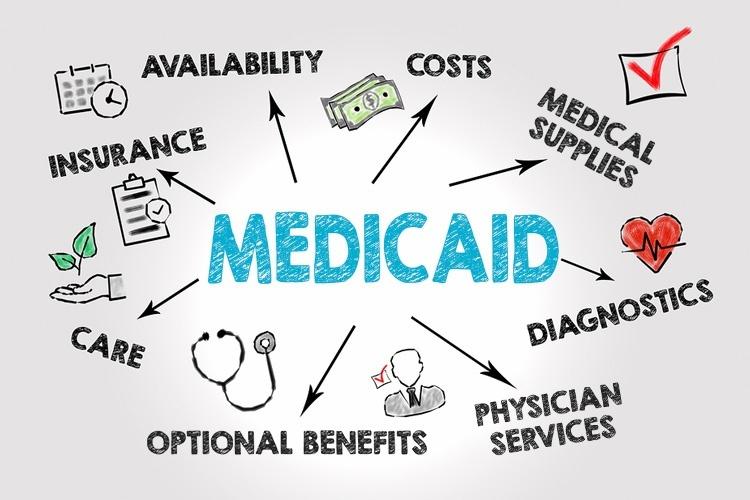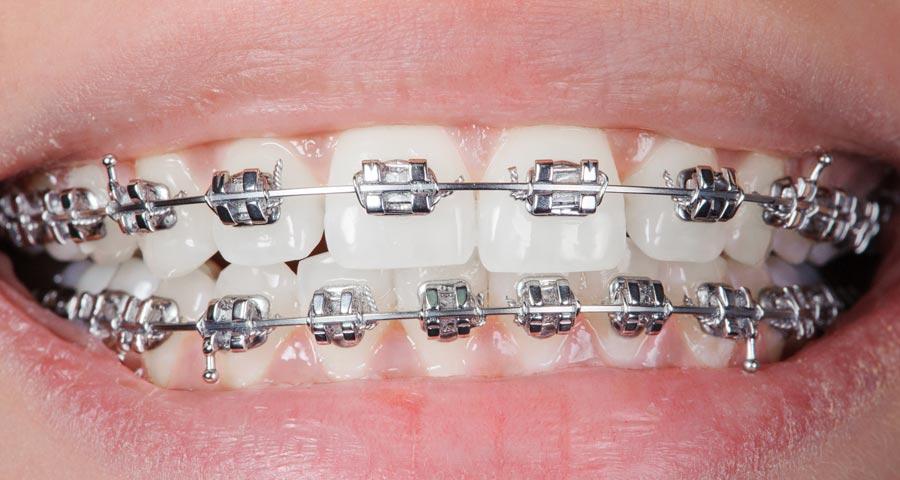When it comes to achieving a confident smile, braces often play a pivotal role, helping individuals realign their teeth for both aesthetic and health reasons. However, the journey to that perfect smile can sometimes be complicated by finances, leading many to ask an important question: Does Medicaid cover braces? This inquiry opens up a broader conversation about dental care accessibility, the nuances of insurance policies, and the impact of oral health on overall wellbeing. In this article, we will explore the intricacies of Medicaid’s coverage for braces, shedding light on what beneficiaries need to know, the eligibility requirements, and the various factors that can influence coverage decisions. Whether you’re a parent seeking treatment for your child or an adult looking for options, understanding your rights and resources can empower you to make informed choices about your orthodontic care.

Understanding Medicaids Coverage for Orthodontic Treatment
When it comes to orthodontic treatment, many families often wonder about the extent of financial support provided by Medicaid. Medicaids coverage can vary significantly from state to state, which means that understanding local policies is crucial for families seeking braces for their children. Generally, Medicaid considers orthodontic treatment to be medically necessary only under specific circumstances. To determine eligibility, assessments typically focus on dental health issues that might lead to further health complications, such as difficulty in chewing or significant jaw alignment problems.
In most states, Medicaid may cover braces if the orthodontic condition falls under certain criteria, which can include:
- Severe malocclusion (bite issues)
- Significant overcrowding of teeth
- Jaw-related health problems requiring correction
Each state’s Medicaid program provides a list of approved dental providers and guidelines for treatment, making it important to consult local regulations and dental professionals.
Some related questions and more specific information
How to get free braces with Medicaid Texas?
Are braces covered by Medicaid in Michigan?
Does Medicaid cover braces in Virginia?
Does Medicaid cover braces for adults in Colorado?
Additionally, families should consider that while Medicaid may assist with the costs, coverage might be partial, and there could still be out-of-pocket expenses involved. Understanding these nuances is essential for making informed decisions regarding orthodontic care.

Does Medicaid Cover Braces? Eligibility Criteria
Understanding the eligibility requirements for Medicaid dental benefits is crucial when considering coverage options for orthodontic treatments like braces. Typically, to qualify for Medicaid dental services, individuals must meet specific criteria based on their state’s regulations, which can vary significantly. Generally, eligible groups include:
- Low-Income Families: Medicaid primarily serves families and children from low-income households.
- Pregnant Women: Many states offer expanded coverage for dental benefits during pregnancy.
- Elderly and Disabled Individuals: Seniors and those living with disabilities often qualify for enhanced benefits.
- Children Under 21: Pediatric dental coverage is mandated under Medicaid, which may include braces if deemed medically necessary.
It’s important to note that while braces can be covered, eligibility often hinges on clinical assessments by dental professionals. Generally, the determination for coverage is made based on factors such as:
| Criteria | Details |
|---|---|
| Medical Necessity | Braces may be covered if they address a significant dental issue, such as malocclusion. |
| Provider Participation | The dental provider must be enrolled in the Medicaid program to qualify for reimbursement. |
| Age Considerations | Coverage is often more comprehensive for children than adults. |

Navigating the Application Process for Braces Under Medicaid
Understanding how to navigate the application process for braces under Medicaid can seem daunting, but breaking it down into manageable steps can simplify the journey. Start by reviewing your state’s Medicaid guidelines to determine eligibility for orthodontic treatment. Each state has different requirements, so it’s crucial to identify if braces are covered for specific conditions like severe malocclusion or other orthodontic issues. Gather necessary documentation, including dental records, assessments from dental professionals, and any pertinent medical history that supports the need for braces.
Next, ensure you have the right paperwork ready for submission. Here are some essential points to consider:
- Dental Evaluation: Obtain a formal evaluation and treatment plan from an orthodontist.
- Medicaid Application: Complete the Medicaid application accurately, providing detailed information.
- Follow Up: After submission, regularly check the status of your application.
If you encounter any challenges, reaching out to your local Medicaid office or asking your orthodontist for assistance can be beneficial. They may help clarify the requirements and ensure that your application is complete, improving your chances of approval.

Alternative Options for Those Lacking Medicaid Coverage
For individuals who do not qualify for Medicaid or find themselves ineligible for coverage of orthodontic treatments such as braces, there are alternative avenues worth exploring. Private dental insurance plans often provide a range of orthodontic benefits, including partial or full coverage for braces, depending on the specific policy. Many providers offer a variety of plans that can be tailored to suit individual needs and budgets. Additionally, some dental offices have financing options or payment plans that allow patients to break down the cost into manageable monthly payments rather than paying a lump sum upfront.
Community health clinics and dental schools may also offer affordable orthodontic services. These facilities often provide treatment at reduced rates, facilitated by supervised dental students gaining hands-on experience. Here are some options to consider:
- Dental Savings Plans: These plans can help reduce overall costs for dental care, including orthodontics.
- Negotiated Payment Plans: Many orthodontists can work with patients to create a personalized payment plan.
- Nonprofit Organizations: Some charities offer programs to assist underprivileged children in receiving essential dental work, including braces.
| Option | Details |
|---|---|
| Private Insurance | Partial or full coverage based on the plan. |
| Community Clinics | Reduced-price services through training programs. |
| Payment Plans | Monthly payments to ease financial burden. |
Q&A
Q&A: Does Medicaid Cover Braces? Understanding Your Options Q: What are braces, and why might someone need them? A: Braces are orthodontic devices used to straighten teeth, correct bite issues, and enhance overall oral health. People of all ages may need braces for various reasons, including aesthetic concerns, jaw alignment problems, and to prevent future dental complications.
Q: Does Medicaid provide coverage for braces? A: Yes, Medicaid can cover braces, but it largely depends on the specific state you reside in and the unique circumstances of your case. Medicaid programs vary, and coverage for orthodontics generally hinges on medical necessity rather than cosmetic preferences.
Q: How does one determine if braces are medically necessary? A: Medical necessity for braces is typically determined through a thorough evaluation by an orthodontist. Conditions like severe malocclusion, jaw disorders, or significant tooth crowding are generally considered medically necessary. A written referral or diagnosis from a dentist can support your case.
Q: What are the steps to getting braces covered by Medicaid? A: To get started, follow these steps:
- Consult Your Dentist: Discuss your concerns and get a professional assessment.
- Visit an Orthodontist: They will evaluate your need for braces and document their findings.
- Obtain Pre-authorization: Submit the orthodontist’s assessment to your state’s Medicaid program for pre-approval, ensuring to include any necessary documentation that states the medical necessity.
- Find a Provider: Choose an orthodontist who accepts Medicaid in your area.
Q: Are there limitations to Medicaid coverage for braces? A: Yes, while Medicaid can cover braces, there may be limitations. Some states impose age restrictions, only covering braces for children and teens. Others may have specific criteria for the type of braces that can be covered. It’s crucial to be well-informed about your state’s regulations.
Q: What if Medicaid doesn’t cover my braces? A: If Medicaid denies coverage for braces, don’t despair! You can explore alternative options such as financing plans through the orthodontist’s office, low-income dental programs, or community health clinics that may offer limited services. It’s wise to discuss all financial options available before making a decision.
Q: Are there any additional tips for navigating Medicaid when seeking braces? A: Absolutely! Always stay organized—keep detailed records of all communications with your providers and Medicaid. Don’t hesitate to ask questions; understanding your benefits can empower you in this process. Additionally, consider reaching out to local advocacy groups that can provide guidance and support in navigating Medicaid processes.
Navigating Medicaid coverage for braces can feel overwhelming, but understanding the basics can help ease the journey toward achieving a healthier, happier smile. If braces are the solution you or a loved one need, ensure you’re informed every step of the way!
The Way Forward
navigating the complexities of Medicaid coverage for braces can be a daunting task, but understanding the nuances of your specific situation can empower you in your journey toward optimal dental health. While Medicaid offers a safety net for many essential health services, its coverage for orthodontic treatment varies widely by state and individual circumstances. Whether you’re a parent seeking braces for your child or an adult exploring options for yourself, it’s crucial to research local policies and consult with your healthcare provider or Medicaid representative. Remember, every smile has a story, and with the right information and support, achieving a healthy, confident grin is within reach. As you embark on this path, stay informed, ask questions, and advocate for your dental health – because everyone deserves the opportunity to shine.
Comments are closed.